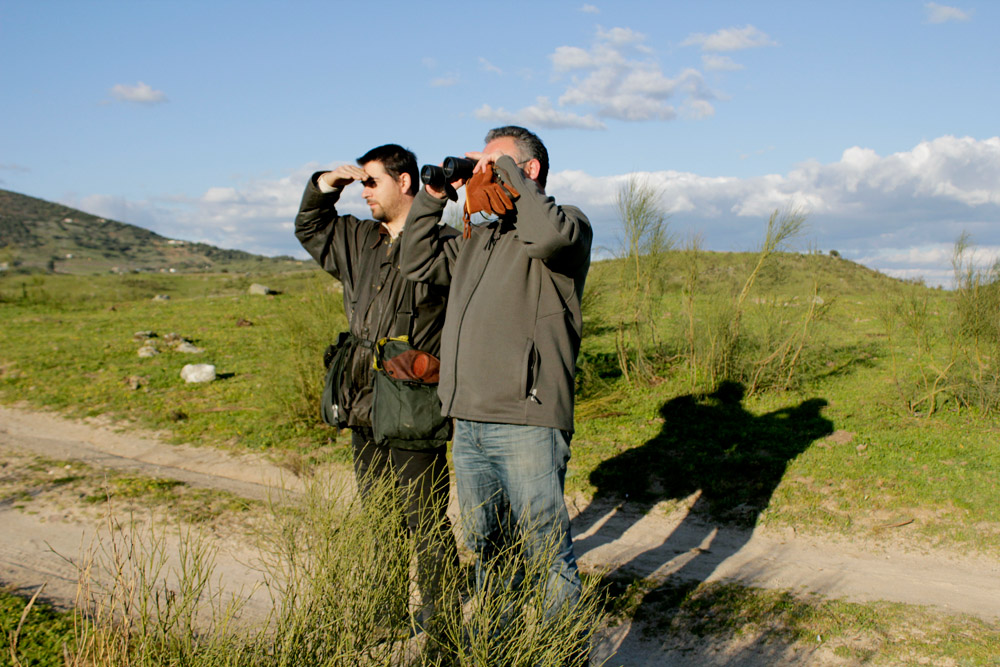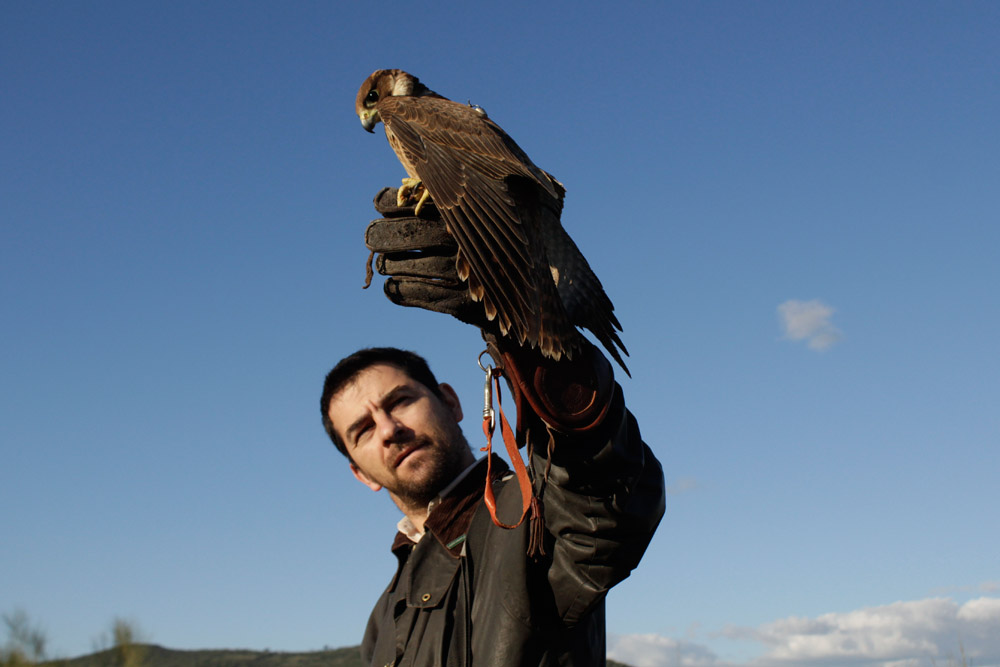
One SUV. Two falcons wearing hoods in the backseat. Two friends. One expert. One apprentice. One vast countryside in Extremadura.
This Sunday is for falconry, or cetrería in Spanish. Falconry is the activity of using falcons to hunt birds in the countryside. Falcons can also hunt rabbits, but it’s illegal in this area. Ducks are the legal kill of birds of prey here.
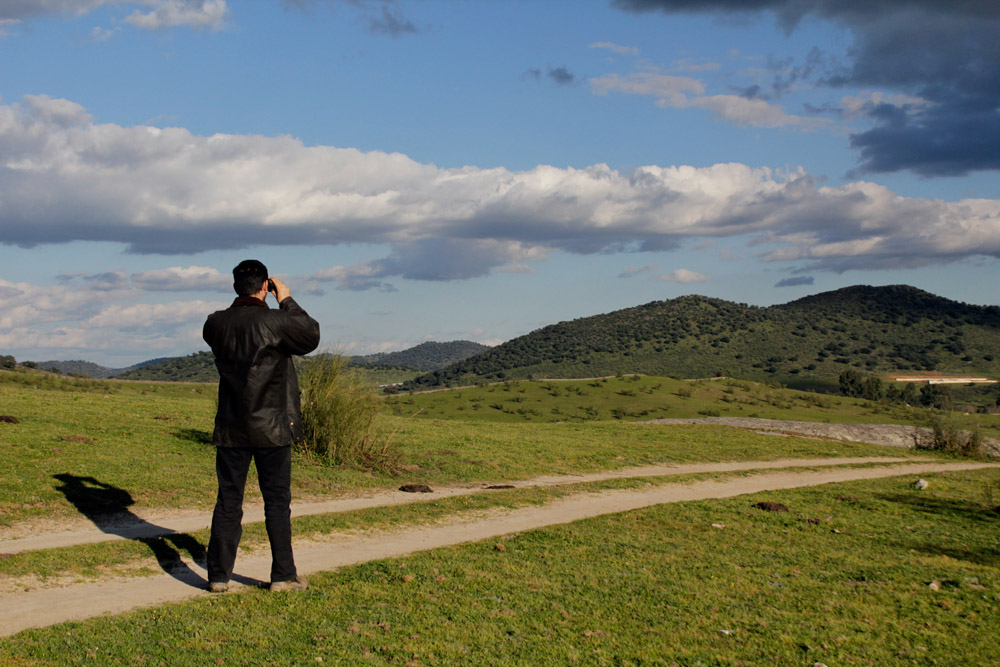
Miguel Sanchez Ceberino is the expert. He has been doing this since he was eleven, when his neighbor had a couple of falcons. Ceberino now has four falcons. This Sunday he brings out Ecija, 10 months old and Tizona, three years old. They are identifiable by their plumage. Tizona has a blue tint to her feathers and Ecija’s is brown.
Since he was an adolescent, Ceberino has cultivated his skill, and he now has four falcons, the oldest of which is eleven.
Ceberino practices every day. He knows the countryside around Jerez well. He will put the hood over the eyes of the falcons, tie them to a perch in the back seat before he leaves in his SUV.
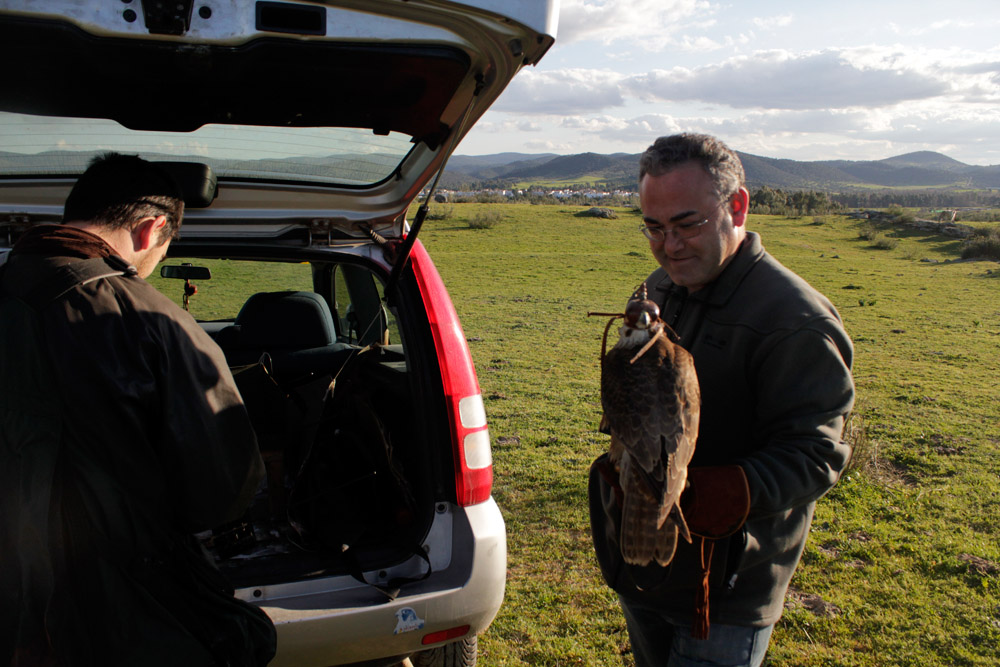
Ceberino (left) and Filiberto Auedillo (right) prepare to launch Ecija.
Then he must search for the best place, driving and pulling over to use his binoculars to search for the falcons. Ceberino says that’s usually where there is water and where he can spot ducks.
He sees a spot that might work, and asks his friend, “Do you like adventure?”
Filiberto Auedillo says he does and they start offroading to a good spot.
Auedillo is preparing to buy his first falcon very soon. In the meantime, he comes out and watches Ceberino and participates as much as he can.
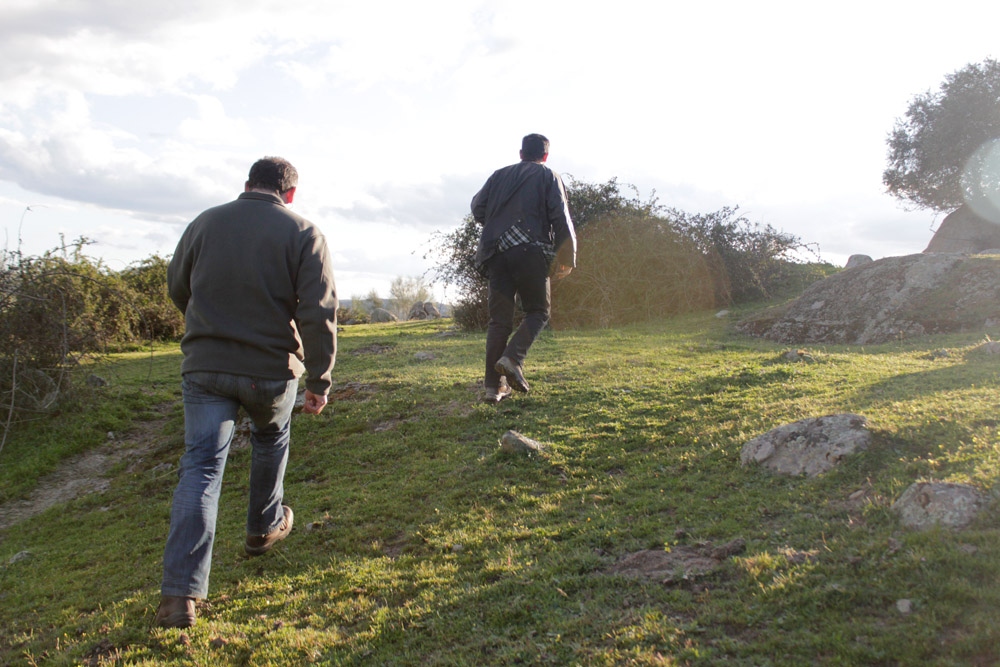
Starting to falcon requires a bit of capital – it costs anywhere from 600 euros to millions of euros for a new falcon. Feeding the falcons requires about half a pigeon each day per bird. They recommend reading Understanding Birds of Prey by Nick Fox and going with someone who has been doing it for a long time.
The art of falconry requires skill, training, patience and a whole lot of luck. Luck for the day and time, luck that there will be ducks, luck that the falcon has a good appetite and attitude and luck for good weather conditions.
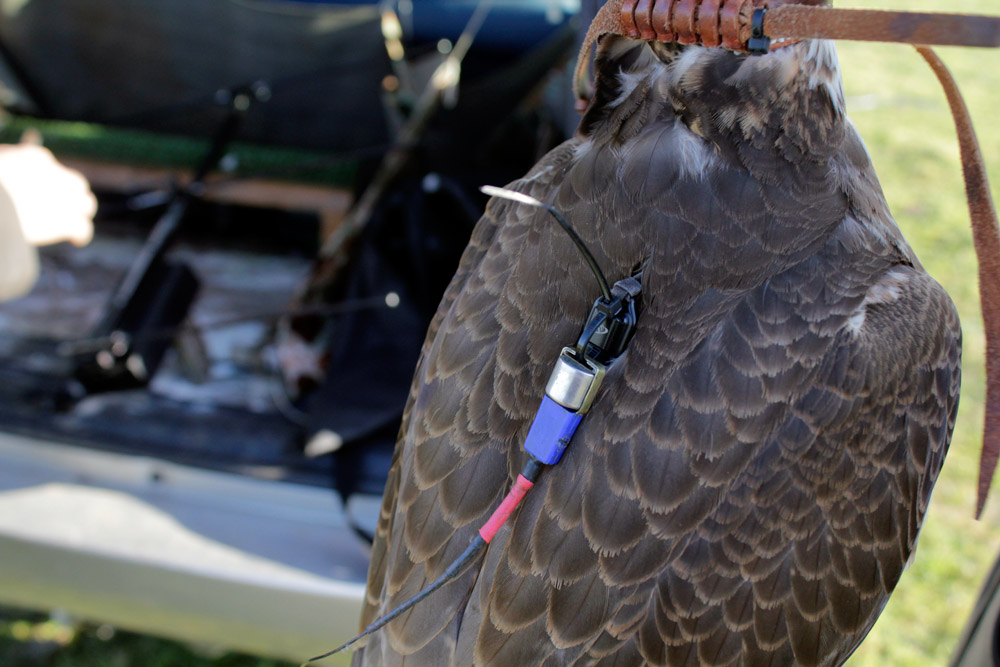
Ceberino puts on a leather glove, attaches the falcon and, once he has walked several meters, releases one falcon with a sensor so Ceberino can keep track of where she flies.
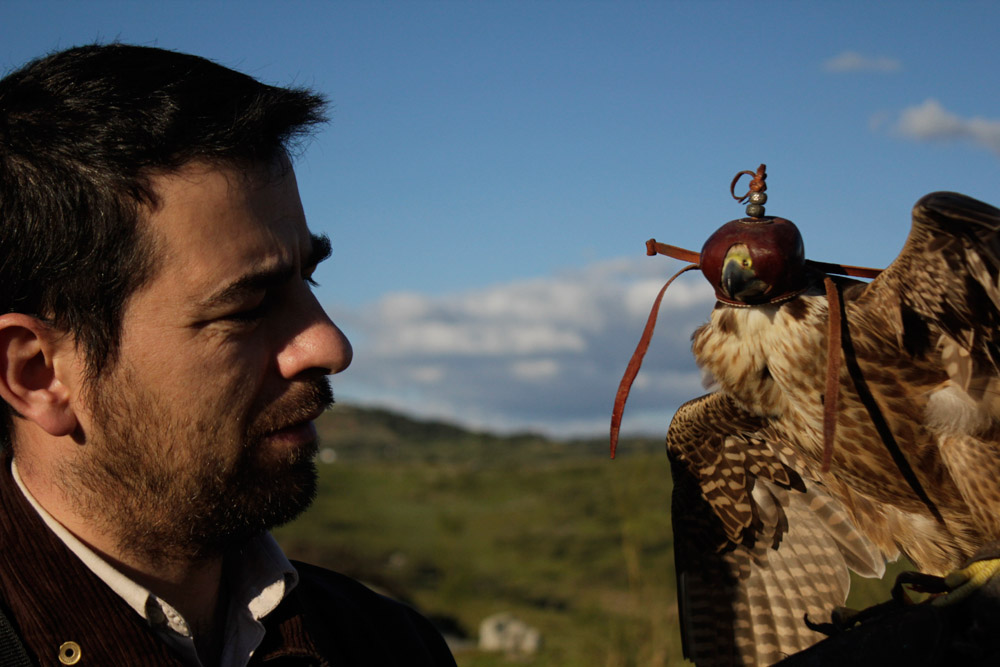
The older falcon first flies high, anywhere from 300-500 meters. For a second his handlers have trouble finding her, then they spot her, just before she dives to catch a pigeon. Her dive seems like freefalling. Tizona misses catching the bird at the last moment.
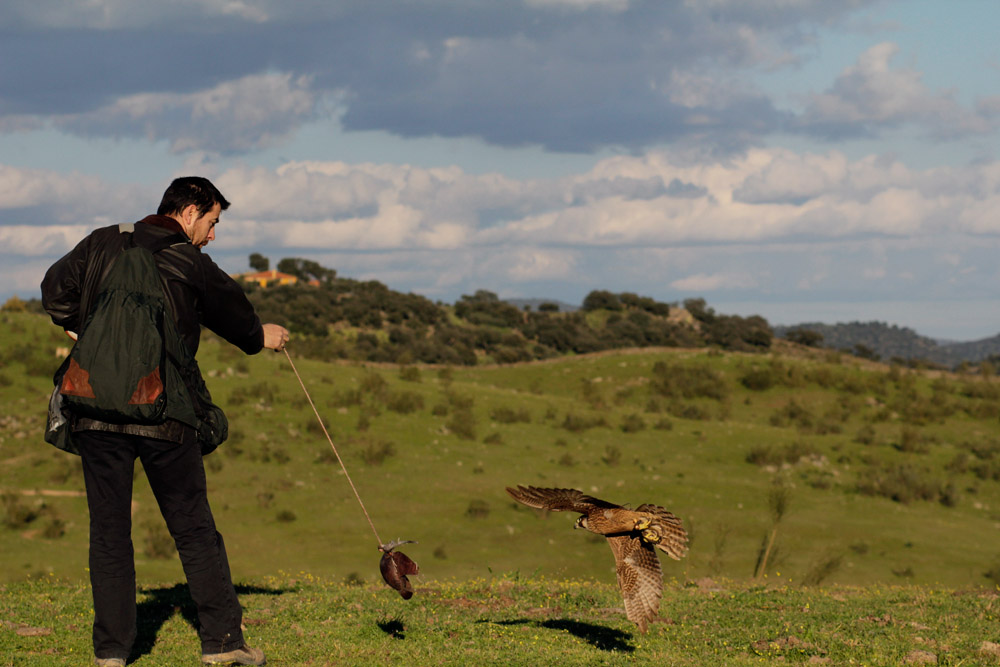
Ceberino uses a whistle, and swings around a piece of meat to get the falcon to come back to him.
“The major prize is the satisfaction of doing something I enjoy,” Ceberino says. “Every day is something different.”
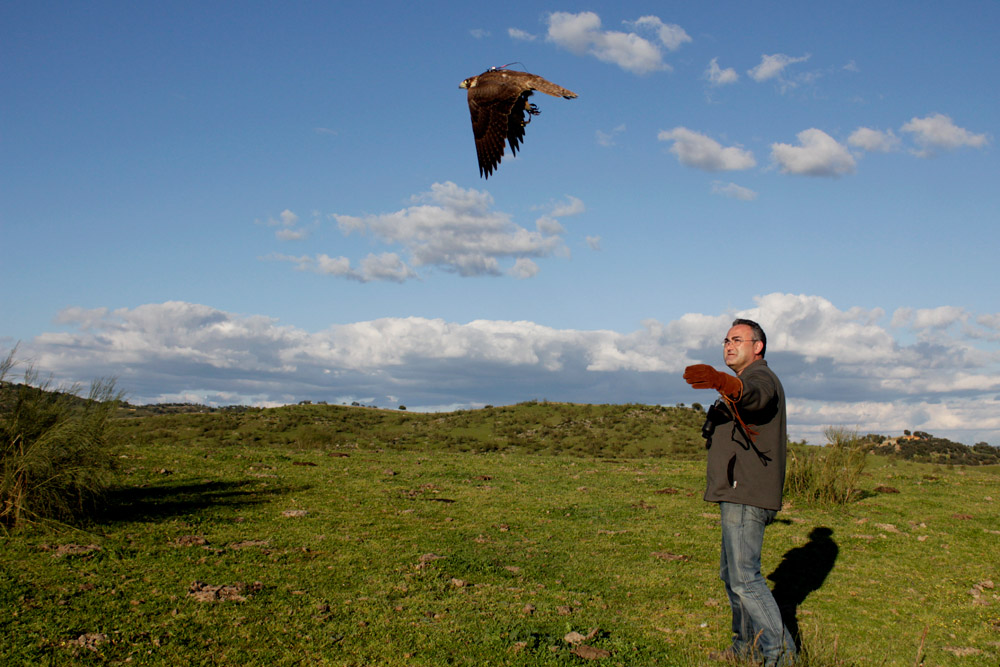
Ceberino says he enjoys watching the falcons fly, enjoying nature and doing what he has spent time every day training his falcons to do.
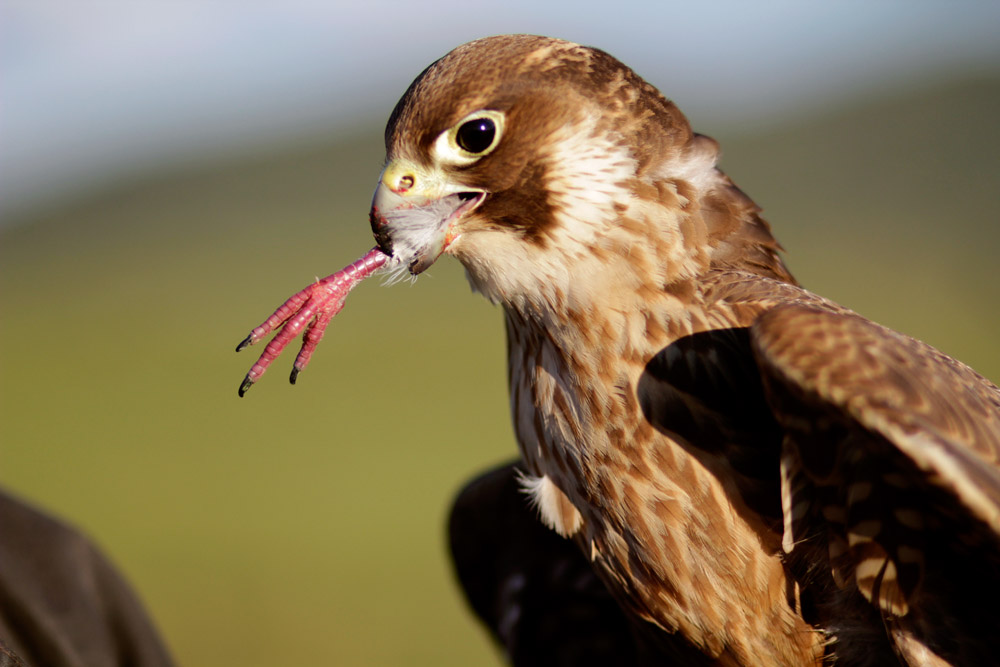
He packs up, a bit disappointed, but knows he will just come back out and try again tomorrow.
Watch the expert falconer in action:
Sidenote: Missed an opportunity to see the launching of the bird, but I captured some other nice moments. Watch a hawk fly, eat and interact with Ceberino.
